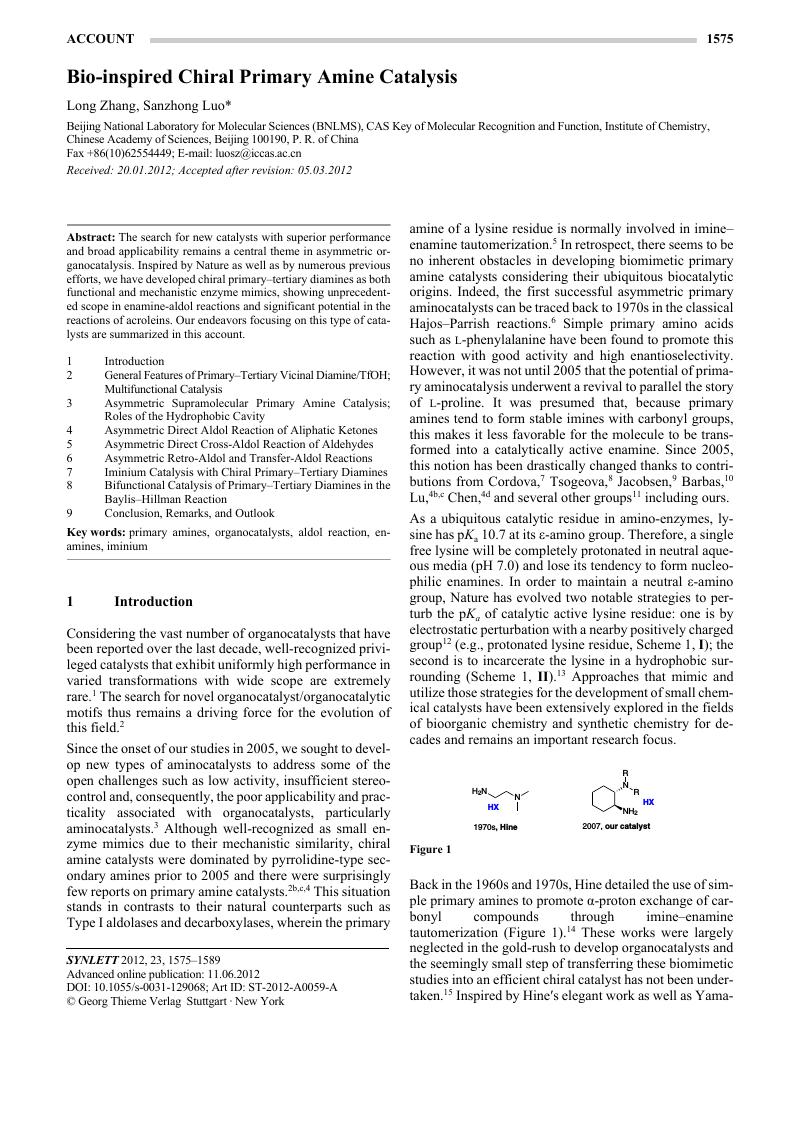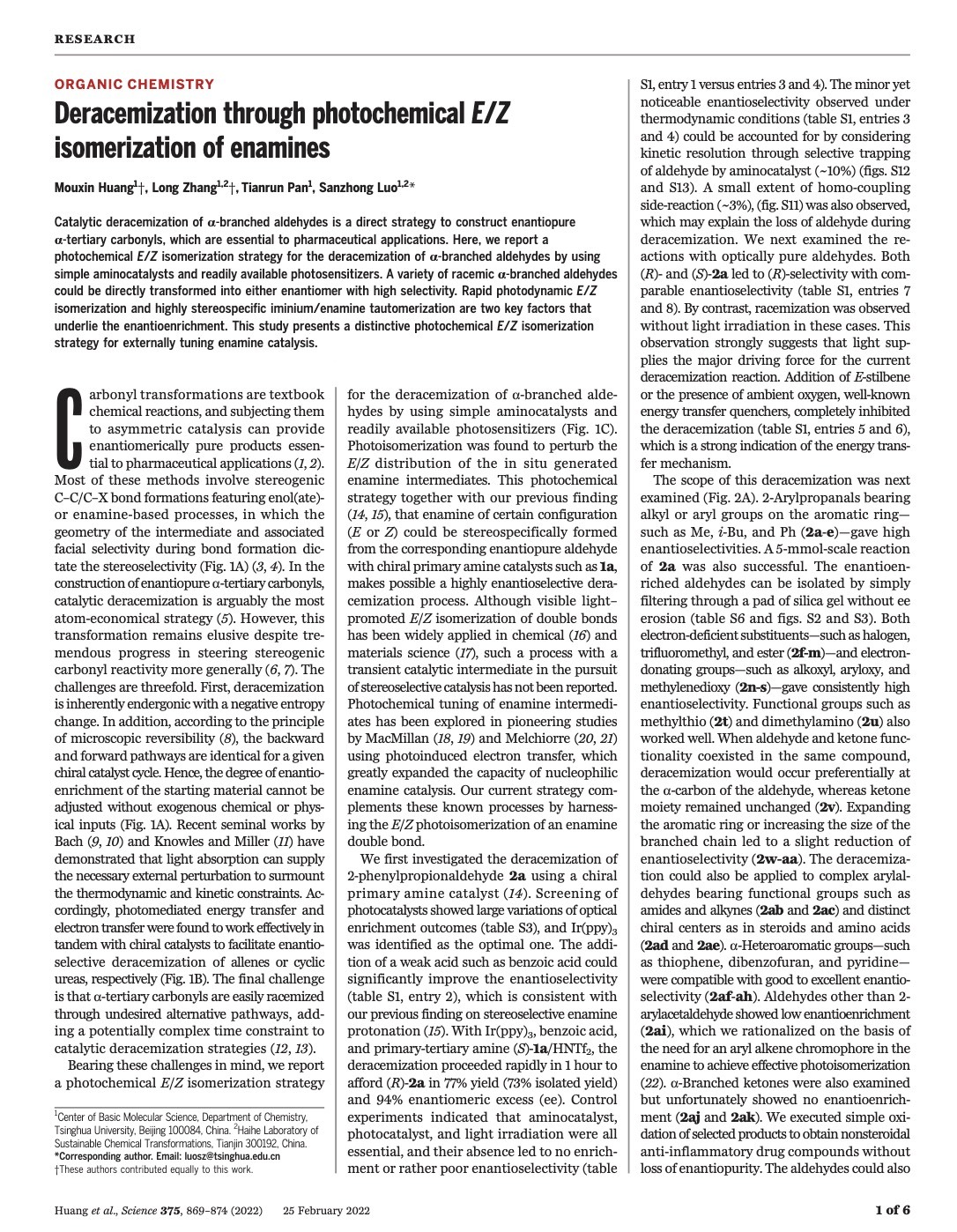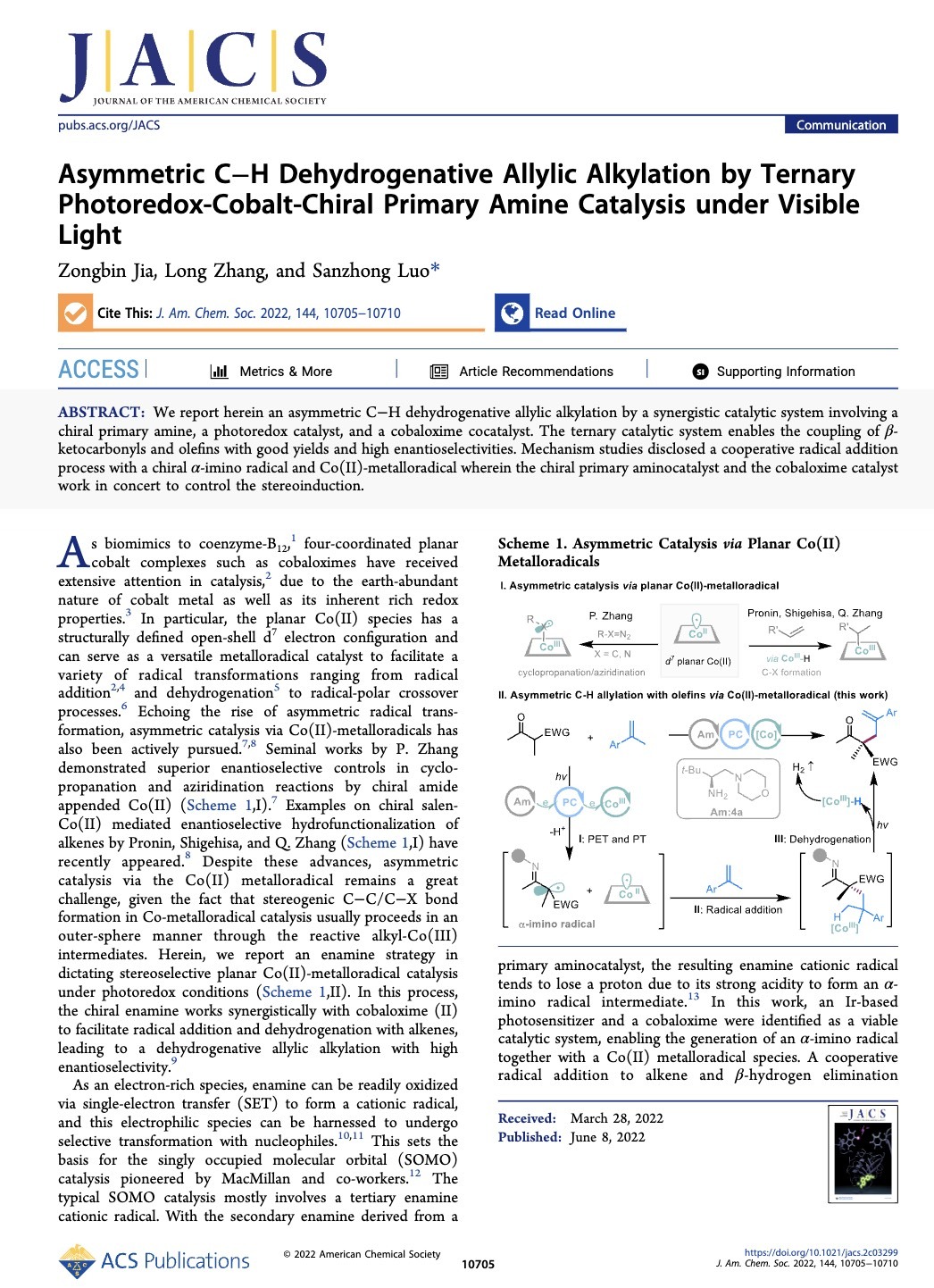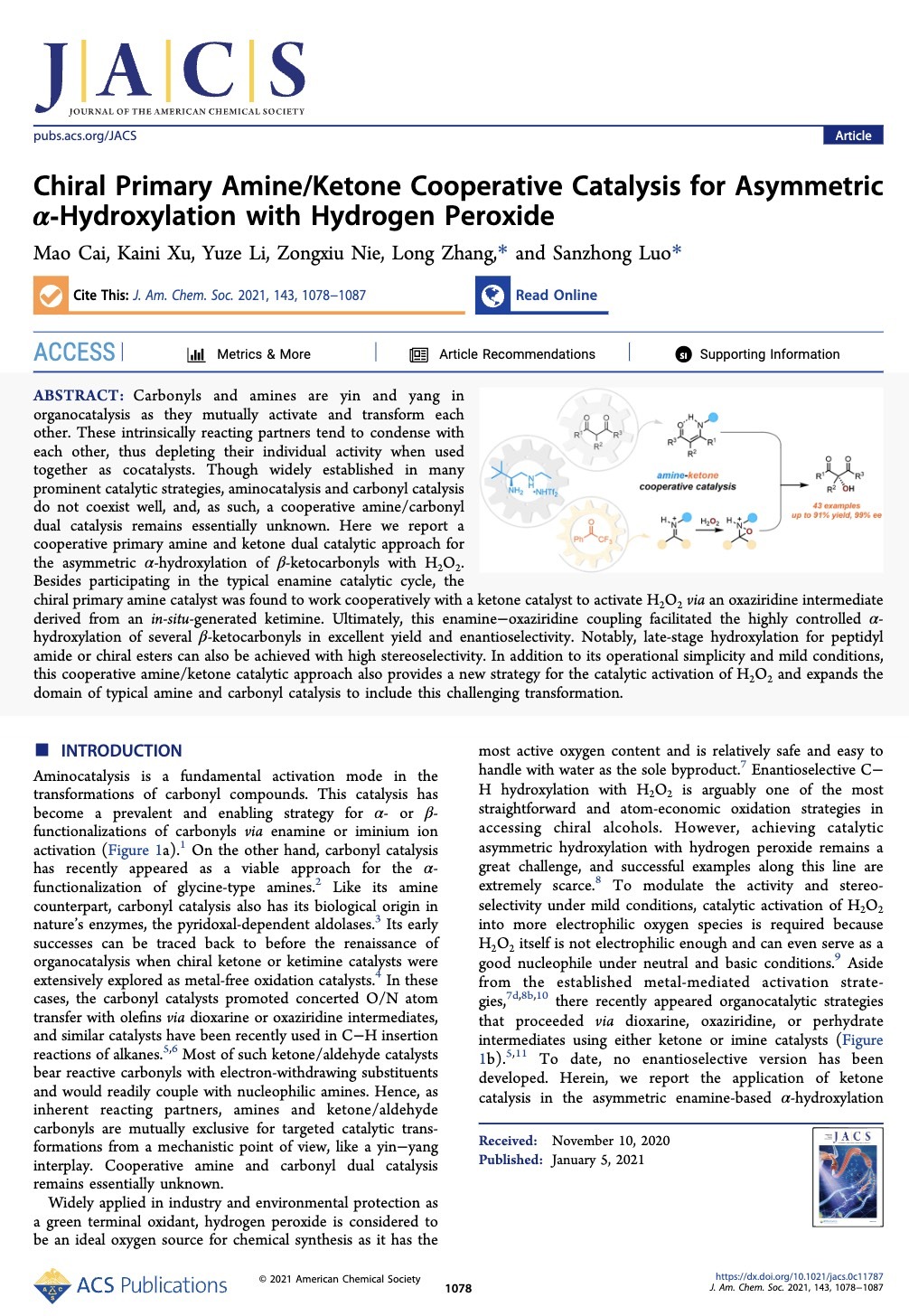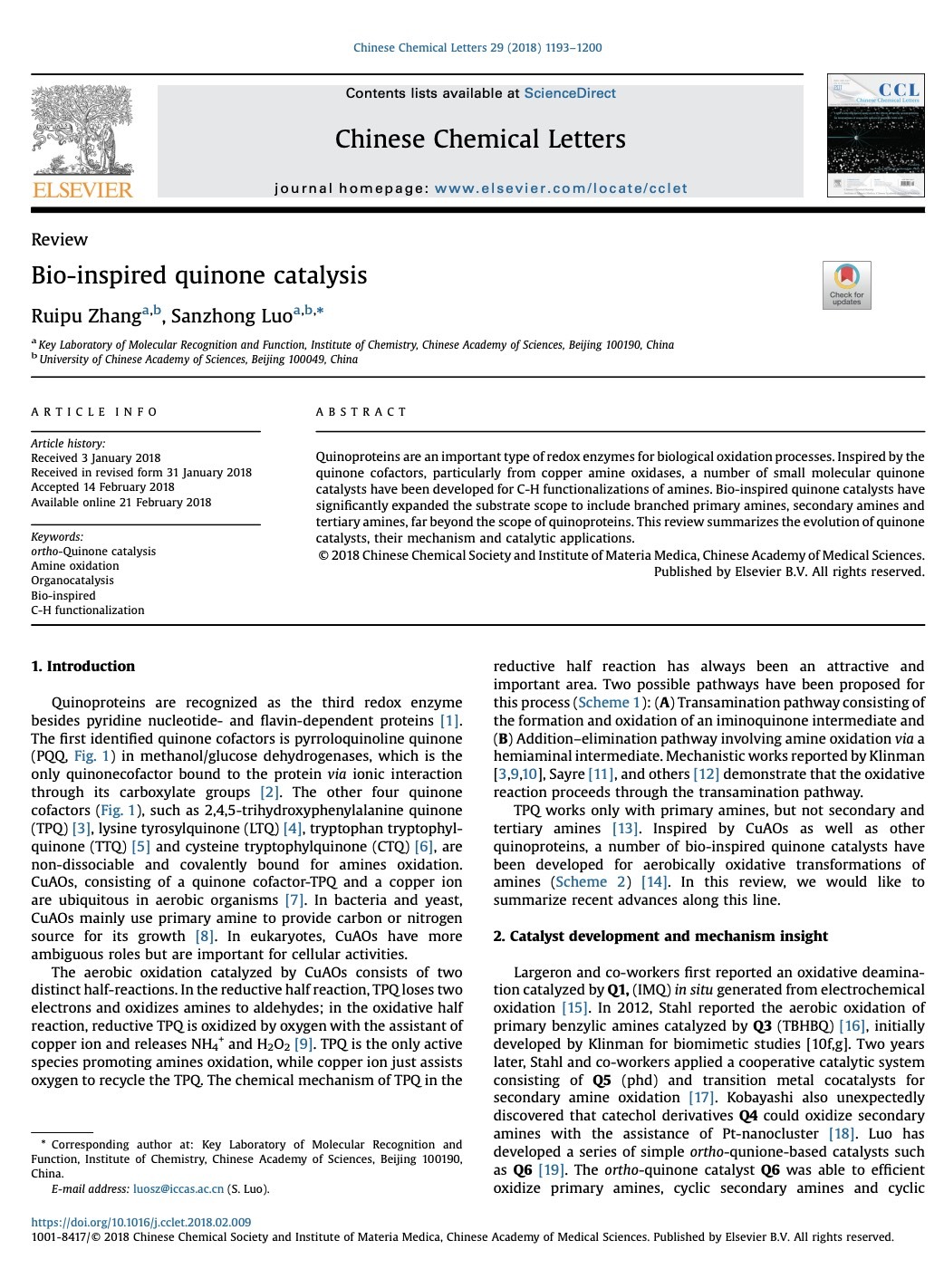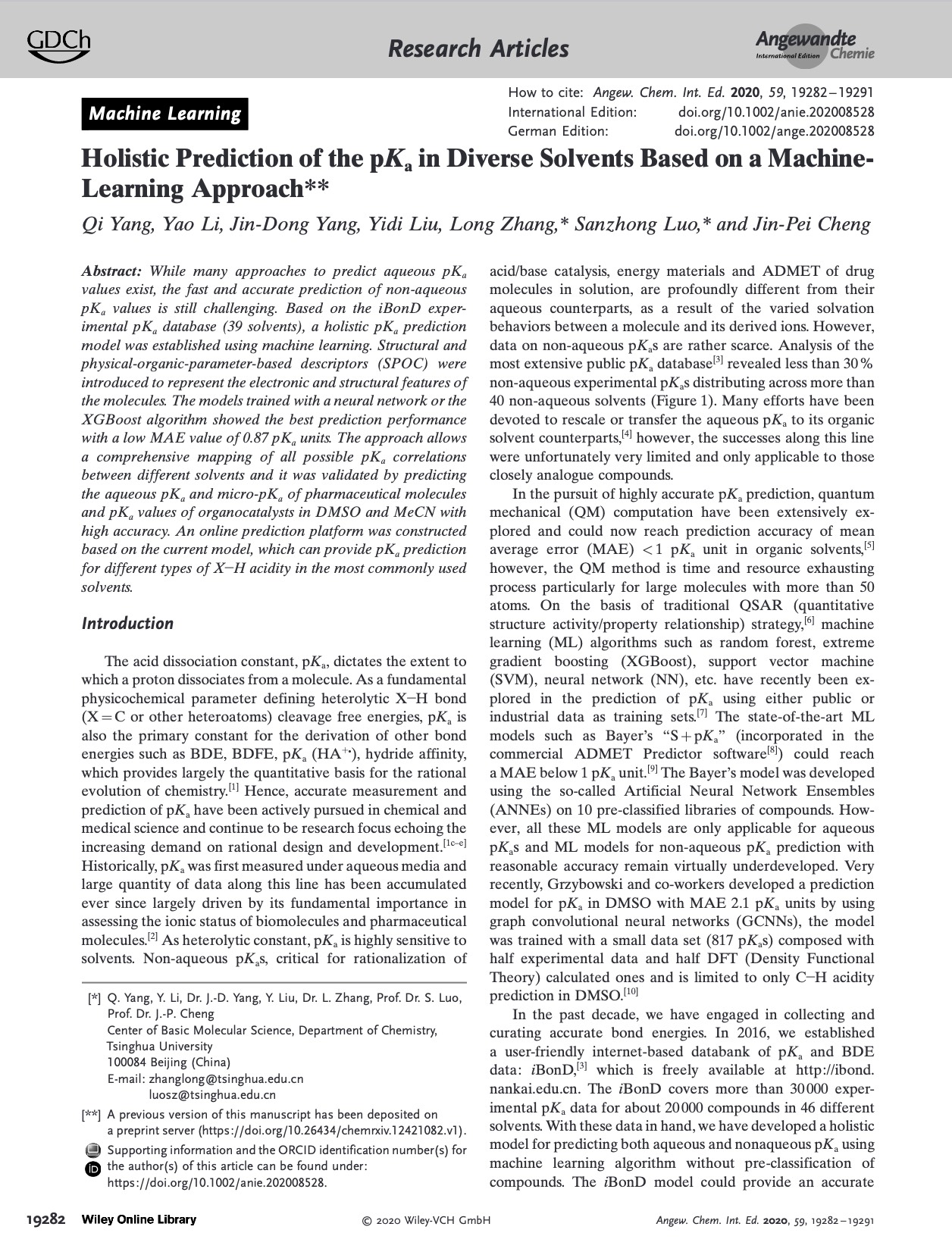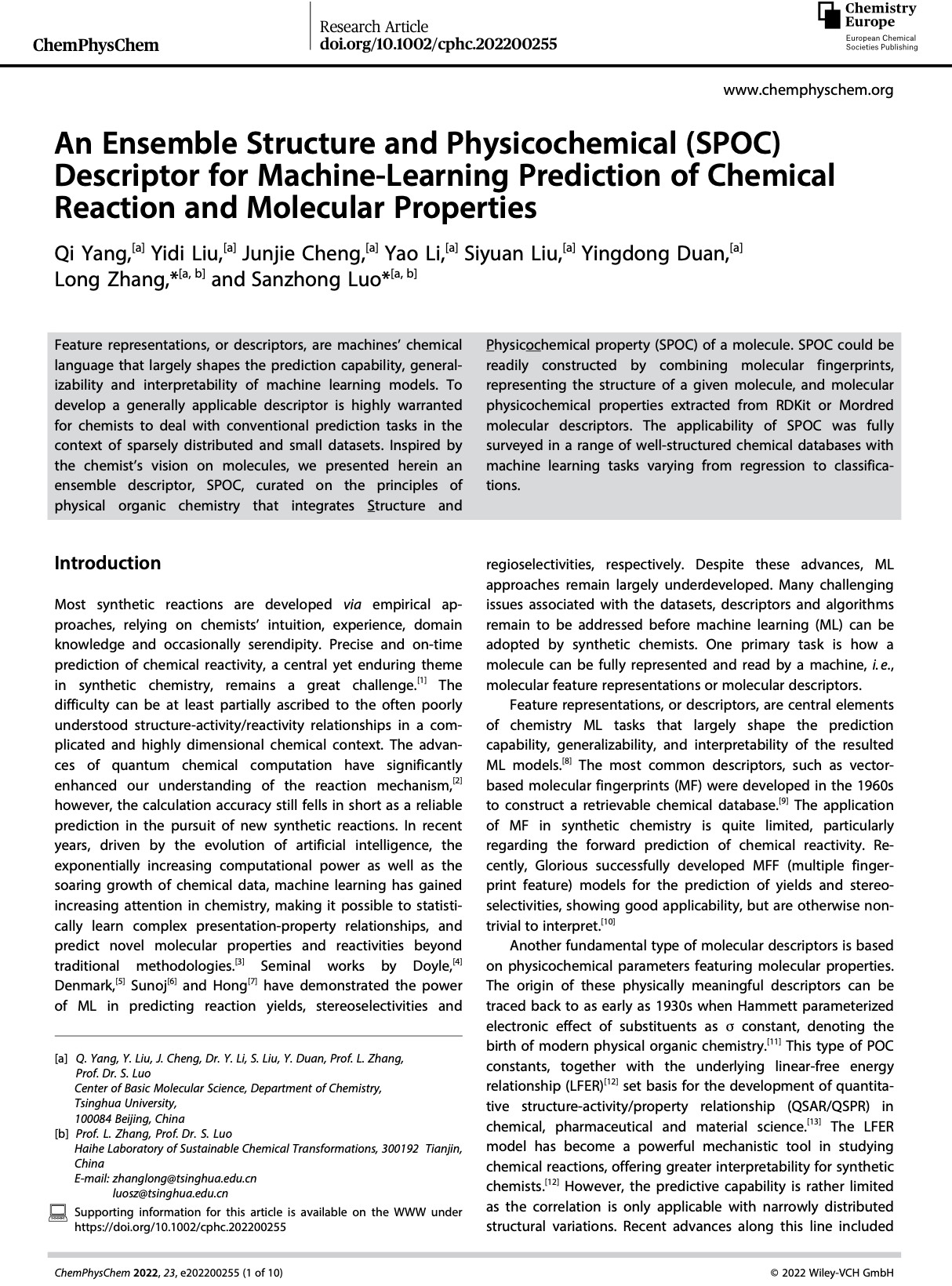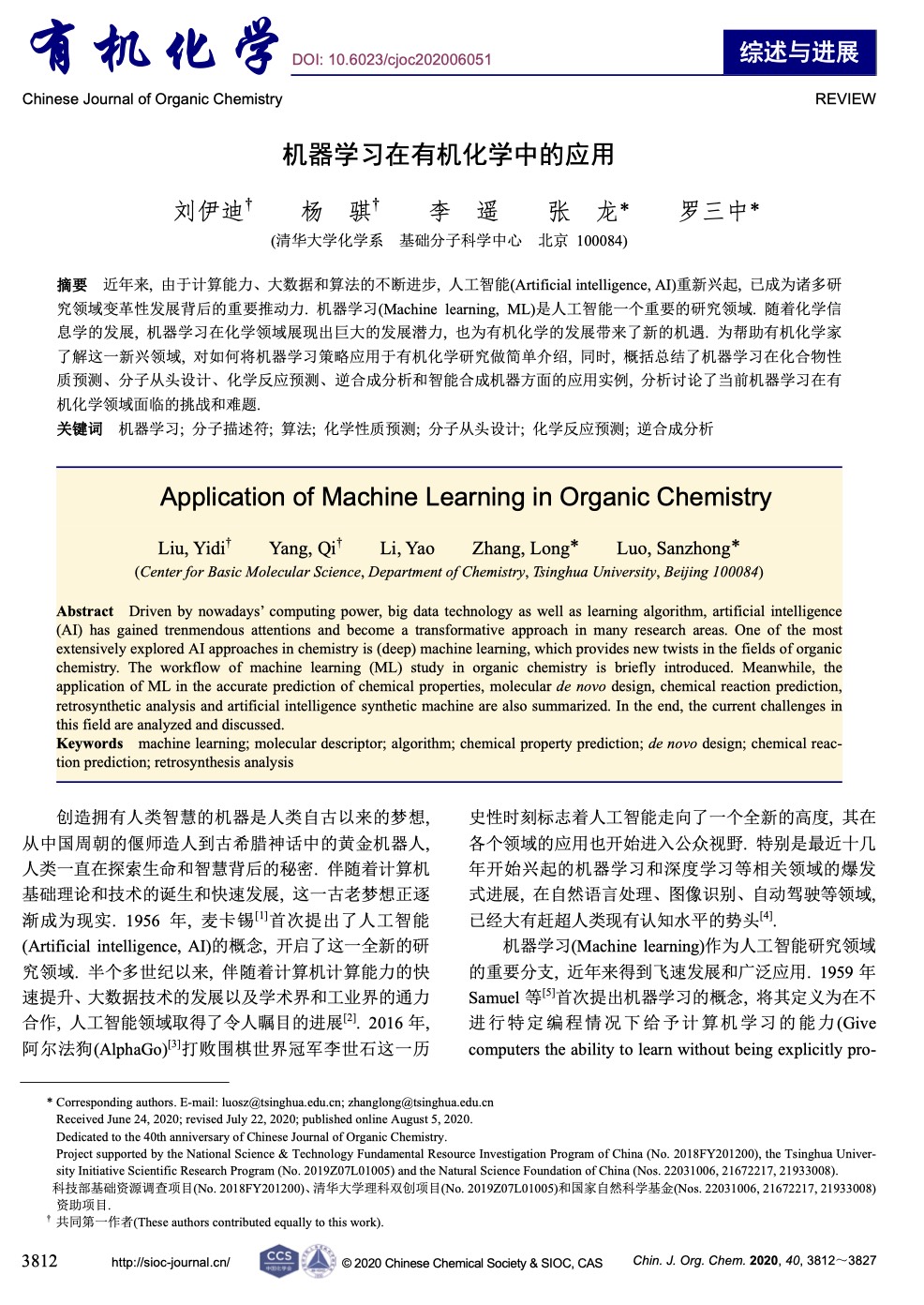Bio-inspired Catalysis

 One of our primary research goal is to invent and develop novel enantioselective catalysts that enable transformations with fundamental synthetic interests and broad utility. Inspired by Nature, we’re particularly interested in the development of viable small molecular catalysts that operate through novel activation modes using enzymatic principles and strategies. We emphasize the physical organic investigations of these catalytic processes with a long term goal toward rational design and evolution of new catalysts. Therefore, combined experimental and theoretical approaches including DFT calculations and machine learning will be harnessed for this purpose.
One of our primary research goal is to invent and develop novel enantioselective catalysts that enable transformations with fundamental synthetic interests and broad utility. Inspired by Nature, we’re particularly interested in the development of viable small molecular catalysts that operate through novel activation modes using enzymatic principles and strategies. We emphasize the physical organic investigations of these catalytic processes with a long term goal toward rational design and evolution of new catalysts. Therefore, combined experimental and theoretical approaches including DFT calculations and machine learning will be harnessed for this purpose.Check out our reviews to find out more: Cai, M.; Zhang, R.; Yang, C.; Luo, S. Bio-inspired small molecular catalysis. Chin. J. Chem. 2023, 41, 548.

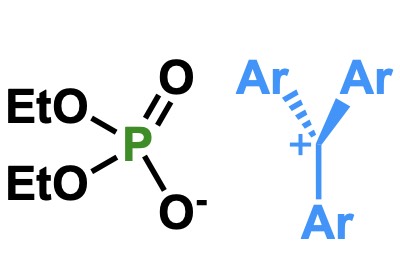
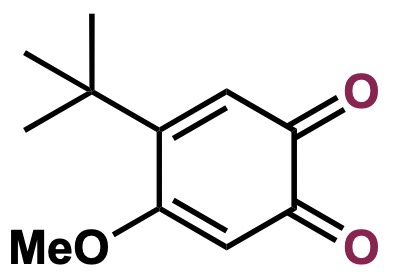

Chiral Primary Amine Catalyst
The manipulation of acid/base properties of molecules has largely shaped the field of organocatalysis with far-reaching impacts on related metal and enzyme catalysis. Our research in this area is to develop viable and reliable small molecular Lewis acid/base catalysts with broad synthetic utility. We have developed functionalized chiral ionic liquid catalysts, new concepts and strategies in asymmetric organocatalysis such as “clicked” organocatalysts, non-covalent immobilization of organocatalysts, surfactant type asymmetric organocatalyst, magnetic nano-particle supported organocatalysts and asymmetric supramolecular catalyst. Using an ethylene diamine skeleton, initially introduced by J. Hine to mimic the Nature diamine catalysis in DERA-aldolase, we successfully developed primary-tertiary diamine catalysts that both functionally and mechanistically mimic their natural counterparts. This type of catalysts turned out to be widely applied in a number of different transformations, pinpointing the power of bio-inspired design.
Review
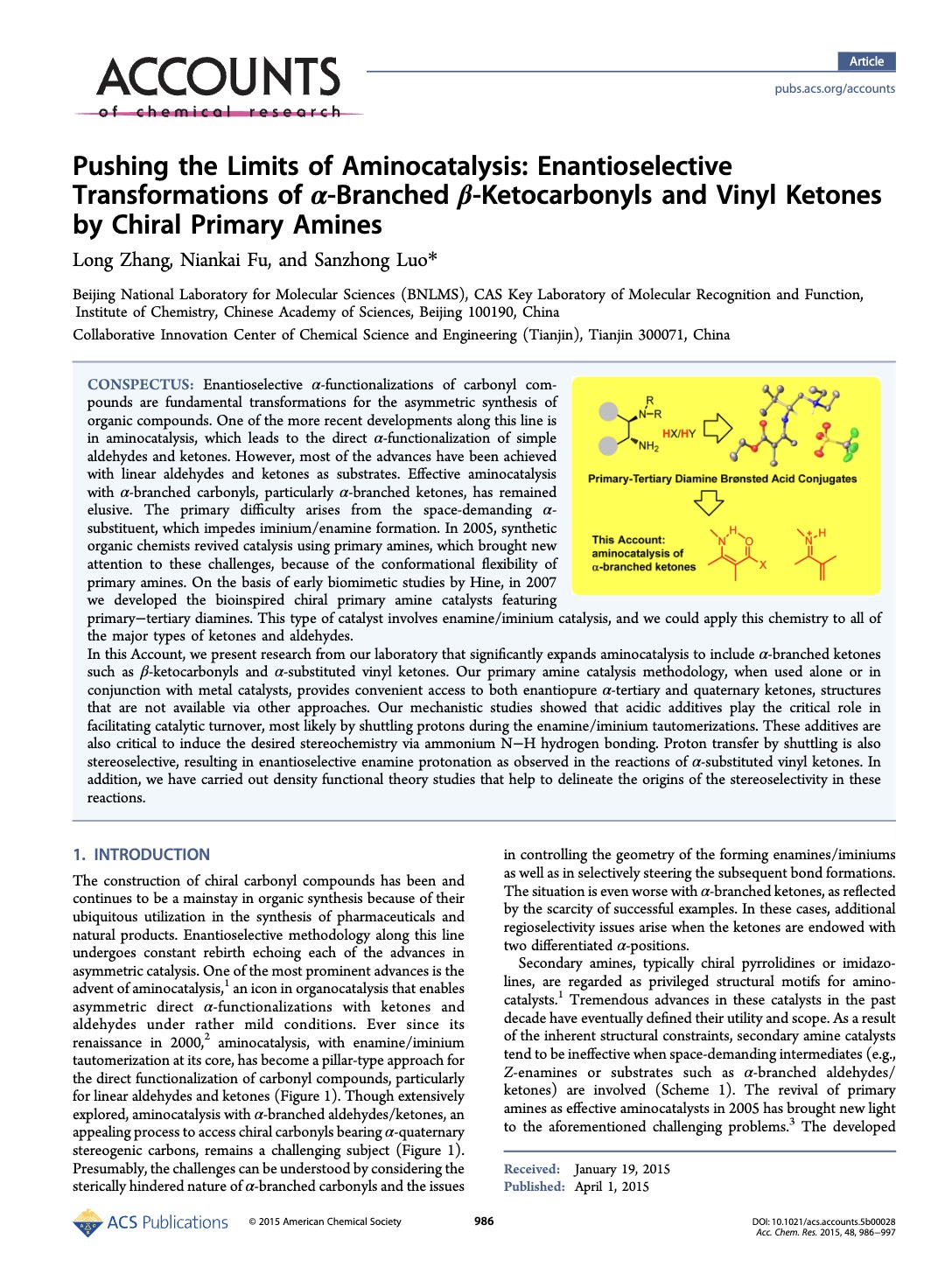
Pushing the limits of aminocatalysis: Enantioselective Transformations of α-Branched β-ketocarbonyls and vinyl ketones by chiral primary amines.
Zhang, L.; Fu, N.; Luo, S. Z.*
Acc. Chem. Res. 2015, 48, 986-997.
Recent Publications

Carbocation Catalysis and Reaction
Carbocation chemistry is widely utilized in Nature in their marvelous construction of terpenoids. Nature’s recipe includes a phosphate anion, (usually) magnesium cations and a perfect evolved cavity to control the generation and transformation of a living carbocation. We have tried to mimic natural phosphate effect by exploring chiral phosphoric acid as dual (neutral) ligand and acid catalyst. The binary catalytic system synergistically integrates chiral phosphoric acid and Lewis acid catalyst as a result of their weakly coordinating behaviors. The resulted binary acid catalysts have enabled a number carbocation-related transformations of olefins and interesting carbocation ion pair effect has been uncovered. The chiral carbocation ion-pair strategy was further elaborated to tackle the long-pursuit asymmetric carbocation catalysis.
Review
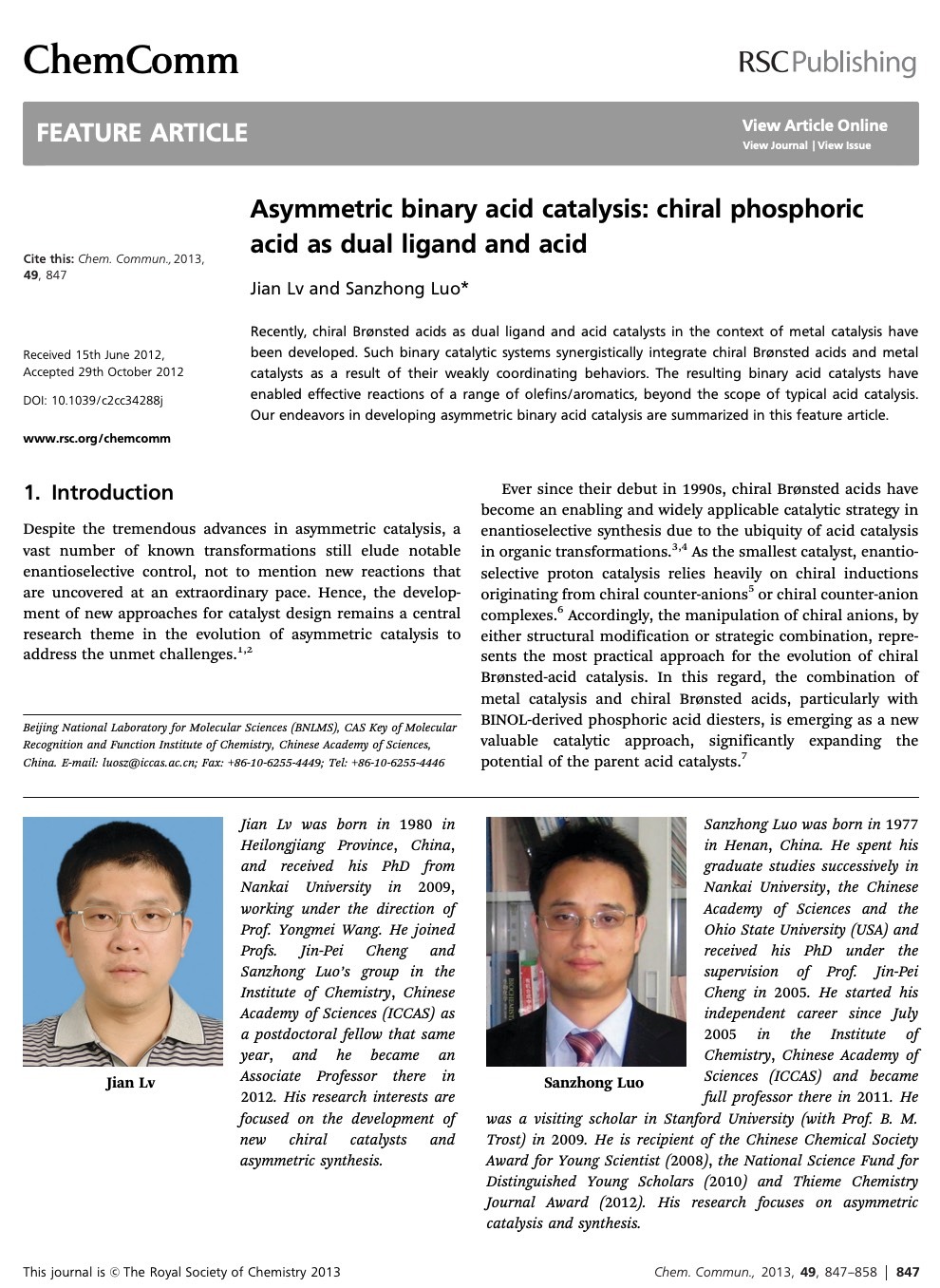
Asymmetric Binary Acid Catalysis: Chiral Phosphoric Acid as Dual Ligand and Acid
Luo, S. Z.*; Lv, J.
Chem. Commun. 2013, 49, 847-858.

ortho-Quinone Catalysis
We also developed an ortho-quinone catalyst based on the natural quinone-cofactors in enzymes such as copper amine oxidase (CAO) or methanol dehydrogenase (MDH). This simple ortho-quinone is of rich redox properties to mediate multi e/H transfer. The ortho-quinone catalyst could be widely applied in the oxidative functionalization of amines and alcohols. The disclosed mechanism on e/H transfer has significant relevance in understanding the natural enzymatic process.
Review
Recent Publications

Bio-inspired lanthanum-ortho-quinone catalysis for aerobic alcohol oxidation: semi-quinone anionic radical as redox ligand
Zhang, R.; Luo, S. Z.*
Nat. Comm. 2022, 13, 428-438.
Chiral Primary Amine Catalyst
The manipulation of acid/base properties of molecules has largely shaped the field of organocatalysis with far-reaching impacts on related metal and enzyme catalysis. Our research in this area is to develop viable and reliable small molecular Lewis acid/base catalysts with broad synthetic utility. We have developed functionalized chiral ionic liquid catalysts, new concepts and strategies in asymmetric organocatalysis such as “clicked” organocatalysts, non-covalent immobilization of organocatalysts, surfactant type asymmetric organocatalyst, magnetic nano-particle supported organocatalysts and asymmetric supramolecular catalyst. Using an ethylene diamine skeleton, initially introduced by J. Hine to mimic the Nature diamine catalysis in DERA-aldolase, we successfully developed primary-tertiary diamine catalysts that both functionally and mechanistically mimic their natural counterparts. This type of catalysts turned out to be widely applied in a number of different transformations, pinpointing the power of bio-inspired design.
Carbocation Catalysis and Reaction
Carbocation chemistry is widely utilized in Nature in their marvelous construction of terpenoids. Nature’s recipe includes a phosphate anion, (usually) magnesium cations and a perfect evolved cavity to control the generation and transformation of a living carbocation. We have tried to mimic natural phosphate effect by exploring chiral phosphoric acid as dual (neutral) ligand and acid catalyst. The binary catalytic system synergistically integrates chiral phosphoric acid and Lewis acid catalyst as a result of their weakly coordinating behaviors. The resulted binary acid catalysts have enabled a number carbocation-related transformations of olefins and interesting carbocation ion pair effect has been uncovered. The chiral carbocation ion-pair strategy was further elaborated to tackle the long-pursuit asymmetric carbocation catalysis.
ortho-Quinone Catalysis
We also developed an ortho-quinone catalyst based on the natural quinone-cofactors in enzymes such as copper amine oxidase (CAO) or methanol dehydrogenase (MDH). This simple ortho-quinone is of rich redox properties to mediate multi e/H transfer. The ortho-quinone catalyst could be widely applied in the oxidative functionalization of amines and alcohols. The disclosed mechanism on e/H transfer has significant relevance in understanding the natural enzymatic process.
Physical Organic Chemistry and Machine Learning
Most synthetic reactions are developed via empirical approaches, relying on chemists’ intuition, experience, domain knowledge and occasionally serendipity. Precise and on-time prediction of chemical reactivity, a central yet enduring theme in synthetic chemistry, remains a great challenge. In the Luo group, we investigate the mechanism and underlying principles of molecular catalysis following physical organic chemistry strategies and approaches. These efforts would provide guidance to expand the catalytic applicability and to aid in methodology-development with depth not possible otherwise. We also develop machine learning tools for molecular catalysis and synthesis on the basis of physical organic chemistry. The data-driven approach, which is also rooted in the history of physical organic chemistry, represents a paradigm shift in the development and evolution of molecular catalysis. Our major research topics include:
- Standard molecular datasets (DeepSynthesis)
- (3D)-molecular descriptors (SPOC)
- Close loop AI Catalysis
Molecular Catalysis for Function and Energy
The nature of an innovation is that it will arise at a fringe where it can afford to become prevalent enough to establish its usefulness without being overwhelmed by the inertia of the orthodox system
- Kevin Kelly
We try to expand the domain of organocatalysis to those uncharted territories, namely fringes of molecular catalysis, or molecular fringe catalysis following the concept of Kevin Kelly. We are interested in exploring chiral chemistry at both molecular and supramolecular level from the view-points of molecular catalysis. We’d like to focus new mode and function of molecular catalysis beyond bond formations. Key topics include:
• Absolute asymmetric catalysis and synthesis
• Stereocontrolled polymerization
• Interphase molecular catalysis
